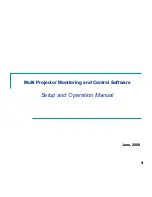
■
The L2RW does not report an error when the required L2_pgm length is longer
than what the hardware can support. [PR/501318: This issue has been resolved.]
■
On an ichip platform, when the downstream multicast member link flaps, the
Packet Forwarding Engine rarely has a chance to fail multicast next-hop handling.
This can cause multicast traffic drops. [PR/501852: This issue has been resolved.]
■
On a TX Matrix Plus router, if one of the two external RJ–45 links between a
TXP-CIP and an LCC Control Board is broken, the router does not generate an
alarm. [PR/508219: This issue has been resolved.]
■
On M120 and MX Series routers when AE interface (with LACP enabled) is used
as a core facing interface for L3VPN, the non-mpls traffic received on the AE
interface can sometimes get black holed. To recover from this state, deactivate
and activate the AE interface in configuration. [PR/514278: This issue has been
resolved.]
Routing Protocols
■
If a static route is pointing to a discard configuration, a failure might occur when
the router attempts to collect the multicast statistic data. [PR/434298: This issue
has been resolved.]
■
Deleting a logical system causes the routing protocol process to be stuck in an
infinite loop. [PR/439000: This issue has been resolved.]
■
The routing protocol process periodically dumps core due to a failed soft assertion:
"rt_notbest_sanity: Path selection failure" in rt_table.c. [PR/451021: This issue
has been resolved.]
■
If the routing protocol process (rpd) experiences a restart, it may not receive the
first PIM hello packet from a PIM neighbor after the restart. This may delay the
establishment of PIM neighbors, and therefore multicast traffic convergence, for
up to twice the PIM hello interval. [PR/452751: This issue has been resolved.]
■
When the last CE interface in a VPLS instance goes down, pseudowires in the
VPLS instance are also removed. However, multicast snooping process does not
remove the logical interface indices corresponding to these pseudowires from
the OIF list of the default bd, mg, vlan routes. This leaves the multicast snooping
routes in an inconsistent state.
When a CE interface comes up again, new pseudowire comes up and OIF list
for the default bd, mg, vlan route is updated by the multicast snooping process.
The kernel finds a stale iflindex for the old pseudowire in the OIF list and rejects
the next-hop add. This problem persists until the multicast snooping process is
restarted. [PR/467347: This issue has been resolved.]
■
If a router modifies the next-hop protocol to self (for example, using an export
policy with next-hop-self) on a peer group containing "internal" peers, and
nonstop routing is configured on the router, the routing protocol process may
send duplicate updates to the peers in this peer group during a Routing Engine
switchover. [PR/468505: This issue has been resolved.]
■
When running PIM and a link flap occurs, the routing protocol process might
crash. [PR/480422: This issue has been resolved.]
■
When a PIC with a PIM-enabled interface is brought online, the router might
send the first PIM hello slightly before the interface comes up. This causes the
82
■
Issues in JUNOS Release 10.1 for M Series, MX Series, and T Series Routers
JUNOS 10.1 Software Release Notes
















































